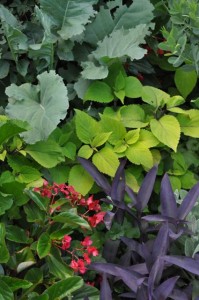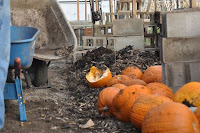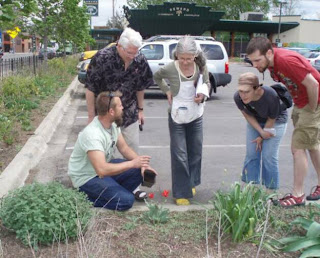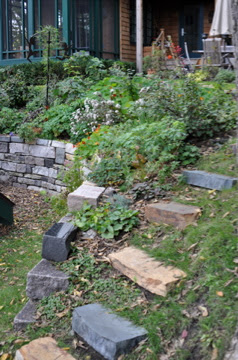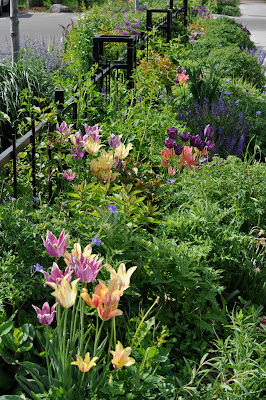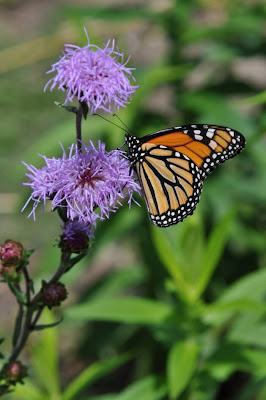3 Secrets Guaranteed to Grow Garden Success this growing season:Secret # 1: Double Dig
Double digging is the best way to turn a tiny yard into a year round gourmet delight for your family and the ecosystem as a whole.
To double dig is simply to mix compost deep into the ground before you plant. Typically I’ve seen landscapers and gardeners mixing compost in soil to a depth of between six inches and one foot when installing a new garden. This is fine if you have plenty of space to produce your food in, but anybody who’s grown a healthy zucchini in a city yard knows that every inch of space can count. In order to double dig, mix your compost into the ground to a depth of between two and three feet. The deeper you dig in the compost, the more room there is for the roots to grow down deep instead of outward along the surface. When roots have room to grow deep, plants can be placed closer together, thus making your yard able to produce more food!
Once you have mixed your soil, you’ll never need or want to turn it again, instead you can add compost as a top dressing for your gardens every spring. Trash to compost, compost to earth, and earth to dinner plate, now that’s a cycle we can all live with. The hops vines shown in right side of this picture grew 12 feet in a single season due to the 4 foot double dig we did before we planted.
Secret #2: Save Your Seeds
Seeds are like currency. You can’t get food without them. So it makes sense that the more variety and volume of seeds that you have the more solid the guarantee you have that your shelves will be stocked. We need to make sure that We The People are in charge of our seeds. We need to grow independent of big seed producing companies, so that we get to choose our local food selection. Store your seeds in clearly marked envelopes inside of plastic zip lock bags, air tight containers, or mason jars with tight fitting lids and place them in cool, dark, dry cupboards or boxes.
Secret # 3: A Little Clay Goes A Long Way
Secret #3 is perfect for gardeners with sandy soil. There is an old farmers rhyme that comes handed down from generations before to help us remember: "Sand into clay is money thrown away, but clay into sand is money in the hand".
What these wise farmers of old would have us understand is that while you won’t get any benefit from adding sand into clay soil, you will get benefits from adding clay into sand. Clay will help retain moisture in a sandy or loamy soil. If you mix clay soil with a little of your compost before spreading the compost you will give your garden all it needs to grow up healthy and strong right from the start. Clay soil is fairly easy to procure in small amounts throughout the twin cities area, if you don’t know a farmer or developer who will let you scoop enough for your sandy gardens, than I’d recommend consulting with Craigslist.













